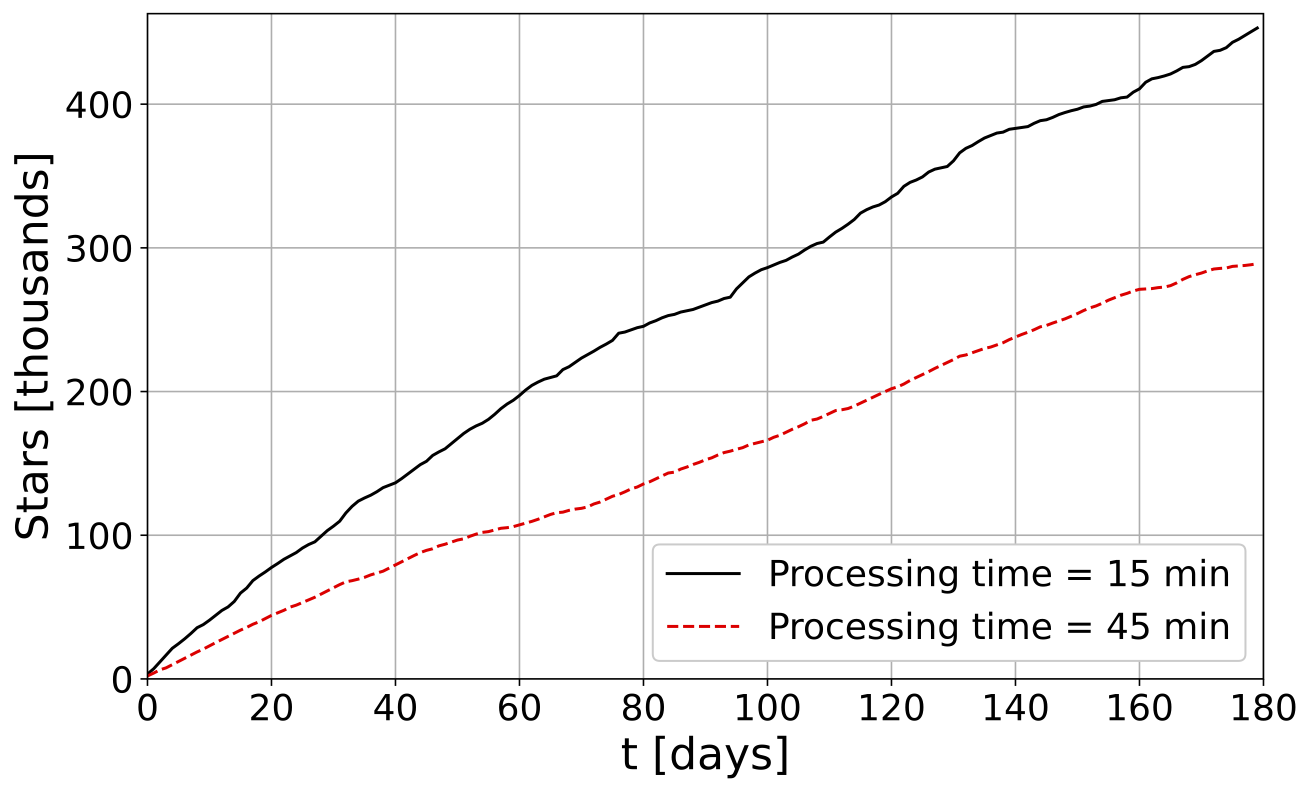SETI Target Selection for MeerKAT
New approaches in the development of radio telescope arrays enable multiple users to receive and process data simultaneously. This architecture presents unique opportunities to conduct commensal ("piggyback") SETI surveys alongside primary science observations. At the MeerKAT radio telescope in South Africa, Breakthrough Listen is conducting such a commensal SETI survey. Both incoherent and coherent beamforming modes (different methods of electronically "steering" the telescope by combining signals from individual antennas) are planned. The incoherent mode will take advantage of the full field of view of MeerKAT, and signals will be localised post-detection. In addition, up to 64 concurrent coherent beams (with higher sensitivity but a smaller field of view) will be formed on objects of interest within the primary field of view.
One of Breakthrough Listen's goals is to observe a million individual nearby stars, a factor 1000 more than our prior surveys. The BL system on MeerKAT is critical to achieving this. However, when conducting a commensal SETI survey, we have no control over where the telescope points - this is set by the primary observer and their observing strategy, in accordance with their own science goals. Therefore, we need a pre-prepared selection of well-characterised stars distributed across the whole sky as visible to MeerKAT. Such a catalog of stars would ensure that every new pointing encompasses stars of interest within the field of view.
The Gaia data releases contain extensive data on several billion stars, for which their distance can be calculated. Thus Gaia data are a natural place to begin when compiling a catalog of stars to draw from during commensal observations with MeerKAT. We derived a subset of nearby stars from Gaia DR2 by applying a series of quality cuts on various parameters (such as parallax, flux and astrometric excess) to produce a well understood catalog of stars with small errors in distance. The chosen metrics result in a stellar sample of about 32 million stars over the entire celestial sphere, of which approximately 26 million are visible to MeerKAT.
Our system at MeerKAT will be able to beamform on and analyse up to 64 stars simultaneously at the maximum expected datarate. Based on our observing predictions (more on these below), the number of stars available within each field of view could be as high as 3000 in rare cases. Therefore, if the primary pointing is too short, we will have to triage stars for observation. Under such circumstances, observing priority will be as follows:
- Ad-hoc sources of high importance.
- Unobserved sources from the full sample of 26 million stars (ordered by distance).
- Unobserved sources from other supplemental catalogs (e.g. exotica).
- Sources from the full sample which have already been observed, but for < 5 minutes or with an array containing < 58 antennas.
- Sources from the full sample that have already been observed, but in a different band.
- Previously observed sources, ordered by distance.
We also estimated observing progress, measured in the number of unique stars observed over time. It is not possible to predict MeerKAT's observing schedule far in advance, since part of the telescope time is allocated to open-time proposals, the calls for which are made at periodic intervals. However, some information on observations planned by MeerKAT's Large Survey Projects is available. Using this information, we simulated observing progress over the coming months and years. Making a conservative estimate of on-sky telescope time and our own processing requirements, we predict that it will take approximately 1 year and 1 month to observe and analyse 1 million nearby stars, as drawn from our catalog.

Two banks of processing nodes will work to analyze data from over 400,000 stars during the first six months of operations (figure from Czech et al. 2021)
Our observing progress simulations predict that the BL survey on MeerKAT will significantly improve on prior surveys, with the potential to become the most comprehensive SETI survey of its type yet conducted. The search for technologically generated signals, especially those which are narrowband with non-zero drift rates indicative of an extraterrestrial origin, will proceed with unprecedented speed, efficiency and sensitivity.
Our full catalog of approximately 32 million stars (5.4 GB) can be downloaded at: https://seti.berkeley.edu/meerkat_db/BL_MeerKAT_target_list_2021.csv.gz
The paper describing the catalog and our observing strategy has been accepted for publication in the Publications of the Astronomical Society of the Pacific. A preprint is available on the arXiv preprint server.
MeerKAT telescope image credit: SARAO
